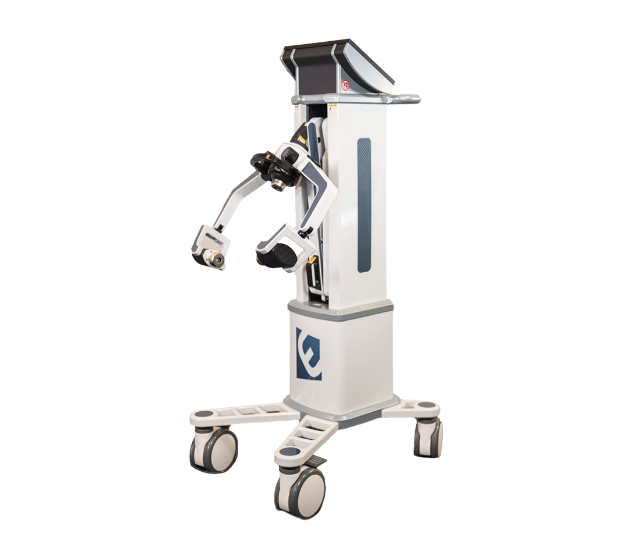

- GERMAN LASER ONE TOUCH PAIN RELIEF THERAPY TREATMENT PROFESSIONAL
- GERMAN LASER ONE TOUCH PAIN RELIEF THERAPY TREATMENT SERIES
Yet, TBI is neither a new problem nor limited to those two populations.
GERMAN LASER ONE TOUCH PAIN RELIEF THERAPY TREATMENT PROFESSIONAL
Traumatic brain injury (TBI) has recently moved into the limelight due to the recognition of its impact on professional athletes and military personnel. Keywords: infrared, traumatic brain injury, TBI, transcranial infrared light therapy, transcranial laser therapy INTRODUCTION The clinical benefit and effects of infrared phototherapy on mitochondrial function and secondary molecular events are discussed in the context of adequate radiant energy penetration. NIR light in the power range of 10-15 W at 810 nm and 980 nm can safely and effectively treat chronic symptoms of TBI. In ten patients with chronic TBI (average time since injury 9.3 years) given ten treatments over the course of 2 months using a high-power NIR laser (13.2 W/0.89 cm2 at 810 nm or 9 W/0.89 cm2 at 810 nm and 980 nm), symptoms of headache, sleep disturbance, cognition, mood dysregulation, anxiety, and irritability improved. Symptoms were monitored by depression scales and a novel patient diary system specifically designed for this study. We demonstrate greater clinical efficacy with higher fluence, in contrast to the bimodal model of efficacy previously proposed.
GERMAN LASER ONE TOUCH PAIN RELIEF THERAPY TREATMENT SERIES
As part of this review, we present a retrospective case series using high-power NIR laser phototherapy with a Class IV laser to treat TBI. Some data indicate that diodes emitting low-level NIR energy often have failed to demonstrate therapeutic efficacy, perhaps due to failing to deliver sufficient radiant energy to the necessary depth. The extant literature is confounded by variable degrees of efficacy and a bewildering array of treatment parameters. An emerging modality of treatment is near-infrared (NIR) light, which has benefit in animal models of stroke, spinal cord injury, optic nerve injury, and TBI, and in human trials for stroke and TBI. All available literature suggests a marginal benefit with prolonged treatment courses. In this review, treatments for the chronic TBI patient are discussed, including pharmaceuticals, nutraceuticals, cognitive therapy, and hyperbaric oxygen therapy. So even if you’re still feeling some pain after a couple of sessions, you can feel confident that results should only get better and better as you continue the treatment course.Traumatic brain injury (TBI) is a growing health concern affecting civilians and military personnel. However, a “full” treatment course typically involves either 6 sessions (for acute conditions) or 12 sessions (for chronic conditions) spread out over a course of a few weeks, with 2-3 sessions per week.īecause the treatments stimulate healing (and not just mask pain) the results stack with each session-and they tend to last, too. Many people report significant symptom improvement in as few as 1-2 treatment sessions. The number of sessions required will vary depending on the nature of your pain. After that, you can go straight home or to whatever else you had planned for the day. We’ll use the laser over the area of tissue that’s currently experiencing pain, and the light energy will penetrate deep into the site of damaged tissues to do its work. The average session takes less than 15 minutes, with basically no prep or recovery time involved. At most you might feel a very slight warming sensation. The specific wavelengths of laser light used in the process can trigger anti-inflammatory responses in the cells, which is how the therapy is able to relieve pain and reduce swelling in the area.Īs we stated earlier, laser treatment is painless, has no known side effects, and does not require any drugs or anesthesia. These soft tissues are commonly affected by injury and can become inflamed. Laser therapy, as noted is particularly effective in treating soft tissues-like tendons and ligaments-found in great abundance in the lower body. With our MLS laser therapy system, there are actually two coordinated lasers in use-a longer-wavelength (905nm) pulsed laser primarily designed for pain relief, and a shorter-wavelength (808nm) continuous laser that rapidly reduces inflammation, as well as stimulates blood and lymphatic circulation (which triggers a whole host of other secondary healing effects).īy working together in coordination, the combined effect of the laser therapy is greater than what either laser could achieve independently.

And while excessive energy can be used destructively, it can also be harnessed for many beneficial purposes-like, say, powering the anti-inflammatory, tissue regeneration, growth, and healing processes within your cells!

If you remember your high school physics, you might also recall that light is a form of energy. While you might be used to thinking of lasers as beams that can cut steel or fend off enemy stormtroopers, not all lasers are destructive in nature. Harnessing the Energy of Light for Cellular Benefit


 0 kommentar(er)
0 kommentar(er)
